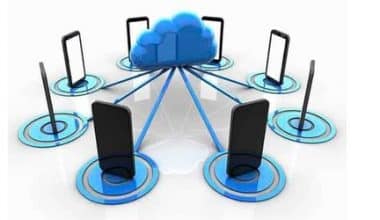The IT assistance sector has undergone a transformation thanks to remote support software. A remote support tool has many advantages for IT, service desk, MSP, and help desk personnel, including increased customer satisfaction, quicker turnaround times, and even lower expenses. What is remote support software? How does it function? and which approach works best for your business? Get all the information you need by reading on.
Remote Support Software
In order to fix technical problems and automate repetitive processes, remote support software enables IT departments and administrators to connect to and control a device from a remote location over a private network or the internet. Businesses utilize remote help software to address technical issues and improve security without necessitating that technicians have access to the equipment that needs support physically.
IT specialists can access technical issues and resolve them remotely with the help of remote support solutions. This kind of software also enables remote system monitoring and diagnostics. Additionally, remote support software may offer audit tools, granular authorization settings, identity management capabilities, and other features that support regulatory compliance.
Despite the fact that both allow access from a remote location over the internet or an intranet, remote support software should not be mistaken with remote desktop software. These two types of software differ from one another in terms of the enhanced functionality they offer.
Although remote support software can be utilized as a stand-alone program, most solutions include integration with remote monitoring and management (RMM) or IT management programs. To improve their ability to assist clients, IT professionals employ remote support software as part of their technology stack.
For a product to be considered a remote support solution, it must:
- Create thorough session reports.
- Remotely complete administrative tasks
- Give complete remote access to, and control of, PCs, servers, and laptops.
- Permit internet or internal network connections.
Examples of Remote Support Software
There is a huge selection of things to pick from. Here are some of the top applications for remote assistance software to help you narrow down your search:
#1. Control by Connectwise.
This is a powerful piece of software that provides instant connectivity that is safe and simple to use while resolving tech problems. Any device, including desktop computers, Android, Windows, and iOS devices, can have issues fixed by specialists as long as there is an internet connection.
#2. Surfly.
It is referred to be a real-time co-browsing and video chat platform for giving visitors remote support. This enables you to guide your client while sharing your browser and documents while guaranteeing that you only see the website and nothing else to ensure that both parties’ information is protected.
#3. Remote Support for Bomgar.
It’s a powerful solution that makes it simple for vendors and staff to access systems while guaranteeing the security of endpoints and login credentials against potential online threats. It works with many different platforms, including Linux servers, iOS, Android, Windows, and Mac.
#4. Toonimo.
It is a self-service web application that offers your customers interactive guidance with visual clues and a real human voice. This is a digital guidance platform designed for omnichannel and e-commerce retail businesses to use remote help and self-service.
#5. Zoho Support.
This program for remote access and support facilitates managed service provider (MSP) and outsourced IT help for your company. It enables quick communication with customers of your business products for the purpose of utilizing customer support.
#6. CloudBerry Remote Assistant.
A CloudBerry-developed remote help program that enables users to connect and remotely access computers to carry out a variety of chores and services like system updates, software downloads, and computer maintenance and repairs.
Benefits of Remote Support Software
Why should you utilize remote support software? The benefits of remote assistance software are as follows:
#1. Quick assistance
Adopting this system’s capacity to offer immediate support is likely its most crucial component. On-demand technical help can be delivered promptly to clients, partners, and staff members by your IT team.
#2. Efficiency.
This software provides a successful method for remote assistance. From a single location, nearly every component of the network can be managed and monitored in real time. It lays the groundwork for a comprehensive method of managing your network as a whole, from changing rights based on user groups and defining people to limiting access to make sure they can only see and use particular desktop controls.
#3. Cost-Effective.
Compared to hiring additional full-time, on-site workers to provide the same level of service, hiring a remote technical support provider will be less expensive. Technicians can work remotely if they have remote support software.
#4. Proactive System Upkeep
This software is undoubtedly a useful tool for monitoring your clients’ systems if your business has maintenance agreements. Through remote access, you can connect to their systems to check on the hardware’s condition and see whether it needs to be updated.
#5. Client-friendly.
You must choose a convenient time for your customer when you visit their place. A back-and-forth of available time is required to reach a scheduling agreement. Additionally, there are times when impromptu alterations take place and throw off your intended schedule.
Types of Remote Support Software
How does remote assistance software work? It comes in two varieties that each do certain tasks:
#1. Attended or On-demand Remote Assistance.
When a client falls into this category, you are needed right away. This typically occurs when a user of your application or service experiences a problem and contacts your support team in order to receive prompt assistance. What is the process? The IT professional connects to your client’s device to diagnose and quickly resolve the issue without the need for pre-installation.
#2. Unattended Online Assistance
Although comparable to attended remote help, unattended remote support offers your expert more access to the client’s device so they can fix it even if they aren’t there. What is the process? For remote access, the technician sends the streamer program to be installed on all the devices that need to be managed.
Features of Remote Support Software
What functions do remote support tools have? These are its main characteristics:
one of the main functions of remote support software. It enables your expert to fully interact with the remote computer by enabling full viewing and control.
#2. Annotations.
Annotations can be used to improve the training or support process in view-only mode. This enables you to mark up specific regions on the remote computer’s screen using drawings, highlights, encircles, and boxes.
#3. Sharing Files.
This crucial function is utilized to fix the issue of replacing corrupted, outdated, or malicious files, which is a frequent problem. This feature not only makes updating, patching, and file transfers simple but also guarantees a safe transaction with robust encryption across a range of devices.
#4. Remote Sharing of a Mobile Device’s Camera.
Some remote support scenarios require more viewing than simply sharing screens. Using their remote video camera on platforms like Android, iPad, and iPhone devices enables the technician to see the peripherals and hardware that the customer sees.
#5. The Transfer Session.
Any number of technicians can be invited if a technician requires assistance from another specialist for debugging problems or remote support. The technicians have the option of cooperating or letting one take over.
#6. Remote Entry Without Supervision.
This function lets your specialist access a computer even without the client’s or end user’s presence to supervise.
To help end users and customers who connect two or more windows and apps, it makes switching between screens is simple. If you use the same screen configuration, you can run NS simultaneously.
Chrome Remote Desktop
Through a Chrome browser or a Chromebook, users are able to remotely access another computer. For situations like ad hoc remote help, computers can be temporarily available. They can also be made available for longer periods of time so that you can access your data and apps remotely. The connections are all completely secure and With the help of Chrome Remote Desktop extension, you may use the web UI to install, view, and alter the native Chrome Remote Desktop client.
All platforms are supported by Chrome Remote Desktop. From the Chrome browser on practically any device, including Chromebooks, you can give remote help to Windows, Mac, and Linux users or access your Windows and Mac desktops at any time.
Chrome Remote Desktop can be helpful for remotely logging into your own computer at home or at work. It can also be helpful to look into someone else’s computer, such as your mother’s or your coworker’s, to offer hands-on assistance without having to be present.
What Is Remote Support Applications?
Here’s our pick of remote support software applications
#1. Zendesk
Zendesk helps teams improve customer connections. Teams may communicate with clients via chat platforms and enabling them to fix issues using its array of tools.
#2. Freshdesk
Freshworks’ Freshdesk customer care platform promotes cross-functional teamwork. Its platform streamlines support channels invite team members to debate and solve tickets, automates chores, and guides clients to fast help.
#3. Atera
Atera’s multipurpose remote monitoring and management software boosts customer satisfaction. The software offers real-time monitoring, alerts, IT automation and scripting, patch management, reporting and analytics, and Mac remote monitoring.
#4. Wrike
Wrike’s software manages cross-functional work at scale. Teams can modify dashboards, processes, files, tasks, and reports on its platform.
#5. Halp
Halp’s innovative ticketing support desk improves IT-Ops collaboration. Teams can modify, allocate, track, and amend tickets in Slack by using emojis or slash commands.
#6. Splashtop
Splashtop’s remote access and support software is used by many organizations. Its program lets teams access all workstations from any device, enable access to specific computers, and purchase, deploy, and manage security measures.
#7. ConnectWise Control:
ConnectWise lets firms remotely operate devices and serve customers. Remote support lets teams access endpoint devices.
#8. RemotePC
RemotePC software speeds up connections and boosts productivity. Teams can move files and folders and speak among machines using its platform.
#9. TeamViewer
TeamViewer allows teams to connect remotely. The company’s software provides instant remote support via integrated service case management and secure file exchange.
#10. LogMeIn
LogMeIn wants to “unlock the potential of the modern workforce.” Remote-work products allow staff to troubleshoot and traverse websites with clients in real time.
What Are 3 Advantages of Remote Working?
The following are the advantages of working remotely for employees
#1. Ease and Adaptability
Remote employees value their autonomy. They can organize their day to accommodate both their professional and personal obligations as long as they work the assigned hours on time.
#2. Cost-cutting
It might be costly to commute to work. You have to pay for transportation, parking, meals, coffee, snacks, birthday cakes, gifts for coworkers, work attire, and on and on. Some employers even provide benefits like clothing or refueling allowances.
#3. Save time.
Employees who work remotely can choose their own hours in addition to saving time on commutes. Some people perform their best work in the morning rather than the afternoon.
Is Remote Work a skill?
Yes, it is. There are a number of both concrete and abstract skills that are necessary for maximizing productivity in remote work models, such as being a self-starter who is responsible, disciplined, and organized when solving problems.
Conclusion
Remote support software expands options. These apps can engage customers remotely and personalize experiences for some companies. Remote assistance software lets teams access files and photos from remote devices, switch between monitors, and monitor sessions in real-time.
Related Articles
- WHAT IS REMOTE WORK: Meaning, Examples, Policy & Benefits
- CHROME LOGO: Meaning, Reason for the 4 Colors, and What Changed
- ARCHITECT JOB DESCRIPTION: Career, Skills, and Salary
- CHROME LOGO: Meaning, Reason for the 4 Colors, and What Changed






